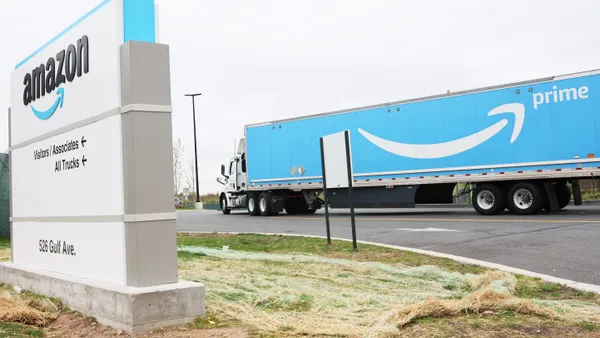Dive Brief:
- The number of miles trucks drive empty is widely underestimated, according to an analysis from trucking startup Convoy, due to a lack of measurement standards and natural human biases. While industry estimates are typically around 20% for empty miles, according to Aaron Terrazas, director of economic research at Convoy, the figure is closer to 33%.
- The share of empty miles driven varies by type of carrier. Convoy's analysis shows for private fleets, in which the shipper owns or leases trucks to carry its own goods, empty miles are around 40% of total miles driven.
- Terrazas wrote the data suggests "remarkably little progress on reducing empty miles since at least the 1990s," although he noted the number of miles driven empty has decreased since the 1970s.
Dive Insight:
Convoy's analysis points to two major efficiency problems in freight transportation: The trucking industry as a whole doesn't have a good sense of how many miles are driven empty, and the empty miles issue has seen little to no improvement over the last 20 years.
The two go hand in hand. Without knowledge of how many miles a truck is driving empty, it's difficult to get to the root of the problem and implement solutions.
Trucks driving without a container contribute to existing capacity challenges and inefficiencies in the industry. In addition, empty miles mean greater fuel costs, more carbon emissions and more traffic congestion.
"Everyone from shippers down to end consumers — and, of course, the environment — ultimately pay the cost of empty miles," Terrazas wrote.
A number of players have popped up in the digital freight matching space in recent years, one being Convoy, seeking to solve the empty miles problem. Others include Uber Freight and Transfix, which use algorithms to match available carriers with loads through a digital interface.
In June, Convoy added automated reloads, enabling carriers to book multiple loads at once on their route. TMS provider Kuebix introduced FleetMAX in February to match loads with fleet backhauls.
Several of the digital freight brokerage startups have raised millions in a series of funding rounds, and established brokers are entering the digital space as well.
The challenge is finding enough trucks and drivers to match loads, Kevin Abbott, vice president of truckload services in North America for C.H. Robinson, previously told Supply Chain Dive. He said digital freight matching hasn't created any additional capacity, but rather is using the same pool of existing trucking capacity. Yet if digital brokers can reduce the number of empty miles, it could make existing capacity more efficient.














